Blue Period Review - Learning to Be Naked

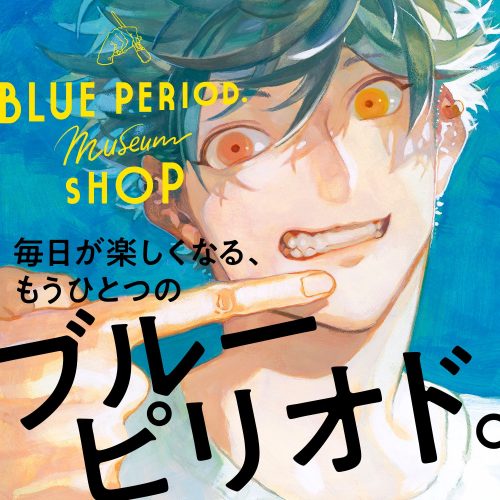
It’s that time where a series has come and gone and we have to sit back and pick up the pieces. This time around, we’re left with something to truly reckon with: vulnerability. Blue Period has been a breath of fresh air over the Fall season, as its honest exploration of the artistic journey from the perspective of delinquent-turned-art-student Yaguchi Yatora. Blue Period has been one of the best anime of the Fall season, if not one of the best slice of life titles to come out this year. Let’s get into what Blue Period managed to do this past season. Naturally, there will be heavy spoilers, so only proceed if you’re ready for that!
– Spoilers Ahead –
An Honest Exploration of the Artist’s Journey
One of Blue Period’s greatest achievements is the level of depth it has for a short series. One of the series’s best elements is its honest and realistic approach to the depiction of the journey of someone who expresses themselves artistically. In this case, we mean all those who draw and paint and everything in between. It achieves this through taking us on a journey with characters who are fleshed out in ways that are incredibly emotional, engaging and enable us to empathize. This is especially true of Yaguchi Yatora, our protagonist who develops a love for art in the course of the series. Yatora is already an incredibly complex character in the opening scenes of the first episode, as we see him grapple with his understanding of reality, his place in the world, his apparent social sidelining alongside his friends and the weight of expectation. When he first sees Mori-senpai’s painting of angels in the art classroom, he is blown away by the depth of the colour, which begins Yatora’s relationship with the colour blue. He notices blue hints in the green-tinted skin of the angel on the left side of the painting, and with a bit of coaxing from the art teacher, he channels the inspiration into his “My Favourite Scenery” project for his art class. The result is a blue interpretation of a scene Yatora sees all the time – Shibuya in the early morning. This scene is linked to Yatora’s various outings with his friend group, which would often linger into the early hours as the four self-proclaimed delinquents kill time with zealous support of the Samurai Blue (Japan’s National football team), cigarette smoking and copious amounts of drinking. The relationship between the things an artist values and the art they create is really important, and when the artwork is completed and hung up for display among the various other projects from students in Yatora’s class. An emotional moment happens when his friend, Koi-chan, correctly understands the painting to be an interpretation of Shibuya in the morning. Yatora is moved to tears by the fact that he has effectively conveyed his true feelings for the very first time in his life. “For the first time, I feel like I’m having an actual conversation with people.” Throughout Blue Period, Yatora is forced to reckon with the juxtaposition of talent and genius to effort and persistence and accept that he’s just a normal human being. However, frustrated by his own lack of ability, confidence and inherent genius, Yatora is determined to work so hard that the unmistakable chasm between himself and a genius is reduced to total insignificance. All artists can relate to feeling underwhelmed or even angry at their perceived lack of progress or ability, and Blue Period has been especially good at depicting these various artistic neuroses while also having Yatora’s progress be realistic or at the very least, believable and not based on some kind of superhuman genius.
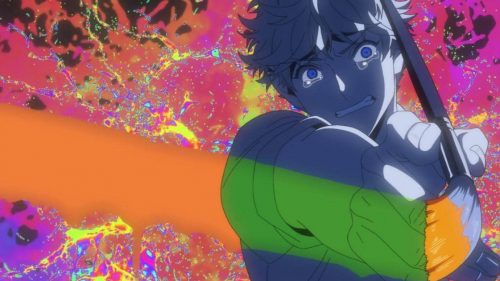
More Than Just Art
Blue Period excels as just an anime about people who are passionate about art, but what was truly appreciated this season was how truly nuanced the characters got, particularly Yatora and Ayukawa Yuka. Yuka’s character serves as an exploration into topics surrounding gender and sexual orientation, particularly the performance and appearance of gendered expression. Yuka deals with being perceived as, and also expressing herself as a girl while having been assigned male at birth, but also people who accessorize her or even antagonize her. There are various comments and sleights towards Yuka’s being assigned male at birth, particularly deadnaming and comments about her choice of wardrobe. As Yatora continues to struggle and improve artistically, he continues to discover things about himself and the world around him. One of the most profound moments is as early as episode 2, where after becoming a member of the art club, Yatora has to tell his parents about his decision to pursue enrolment at Tokyo University of the Arts. He draws a sketch of his mother while she labours for the household: cooking, cleaning, she does all of it. He notices small quirks, like how she always eats the worst-looking portions at mealtimes and how coarse her hands have become. Scenes like this; Yuka’s tearful monologue about how she feels trapped in her own body; accessorised by women, mocked by men, and reviled by both; Yatora’s friend’s confession that his pursuit of art gave the latter the confidence to pursue his own dreams and not care about how it looks; and many more breathe so much life and emotion and tenderness into the show and make it a story worth caring about. We remember that it was Koi-chan, the same friend who first realized what Yatora was trying to convey with that first blue painting, and while we already know they’re close friends, there’s a very nuanced personal relationship between Yatora and Koi-chan.
The Art of Nakedness
An element that began to take over the narrative of Blue Period was Yatora’s skill set and current level. He struggled with simple demonstration of technique with a tool, from the expression of a message through the use of that tool. This problem bothered him a lot as he was often accused of mimicking good art, instead of its creation, and what was actually missing from Yatora’s art was ironically himself. Back in episode 1, we remember that Yatora has a bad habit of wanting to blend in with the crowd and can read a room very well and act accordingly. He uses this as a skill to monitor his social standing, which is something he found important in the beginning; however, one thing he learns not only from art, but from interactions with Mori and more significantly, Yuka, is how to be more honest about his own feelings, desires, or expressions. This is driven home in the latter stages of the series when Yatora and Yuka go on an impromptu trip two days before the second university entrance art exam. They have intense conversations about Yuka’s identity, as well as her reason for quitting art. This happens after Yuka provocatively asks Yatora if he has ever drawn a nude self-portrait. He hasn’t, so Yuka suggests that they try it out. This exercise proves to be the kind of introspection Yatora required—the point is to become familiar, and therefore comfortable, with your own naked body. Here, nakedness is also a metaphor for one’s honest expression of themselves, their true self. This theme later becomes Yatora’s chosen theme for his second art exam, which was not without disaster as he experienced painful headaches and blurry vision, which, like his hives, were related to exam stress. The true self becomes a huge part of Yatora’s arc very early on, but it climaxes with this trip with Yuka, and the second art exam, in which the examinees had three days to create an artwork using the nude model present as their inspiration. Nakedness as subtext for the various interactions and journeys in this anime makes a lot of sense, as the concept of honest expression comes up repeatedly. In the second episode when Yatora drives his mother to tears, it is the sincerity of his words and the drawing he did of her that was indicative of a vulnerability they probably never shared up until that point. Vulnerability is the name of the game with this anime, and it communicates that so well.
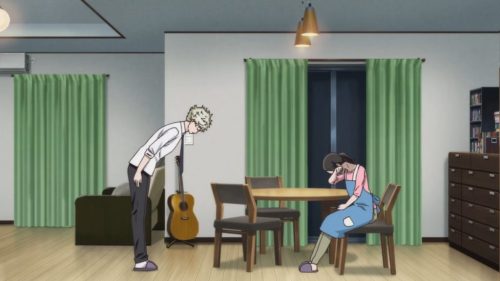
Very Complex and Interesting Characters
We’ve already begun touching upon Yuka as a character; however, the show really puts Yuka’s despair into the spotlight in ways that go beyond her gender or sexual orientation. As an artist, we actually know very little about her except that she is enrolled in the Traditional Japanese painting course. Her decision was because of her grandmother whom Yuka loves very much. Yuka’s grandmother’s own style is Traditional Japanese, but by episode 10, we learn that Yuka is actually better at fashion design. Having selected her path based on someone else’s sensibilities, Yuka is actually deeply dissatisfied with her art but struggles with that because the only person who supports her artistic endeavours at home is her grandmother. In fact, she’s the only person in the family who supports Yuka at all and accepts her as she is.
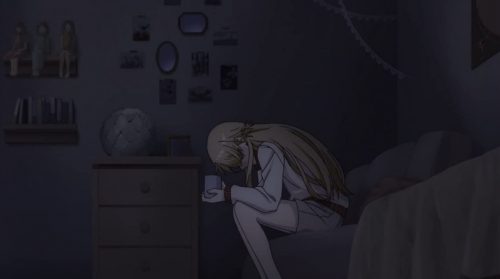
That’s evident in the fact that Yuka’s grandmother is the only one at home who calls Yuka by that name; whenever Yuka’s parents admonish her for whatever reason, her grandmother always arrives shortly after with something for her to eat and some kind words; and when Yuka’s parents clear out her room, throwing away all of her art supplies, it’s Yuka’s grandmother who rummages through the trash to retrieve them. On day 1 of the university entrance art exams, Yuka disqualifies herself by drawing a quick X on the exam canvas and leaving. It’s evident that she cannot move forward with Traditional Japanese painting and refuses to end up having to make that her whole life, especially since so many things are decided for her.
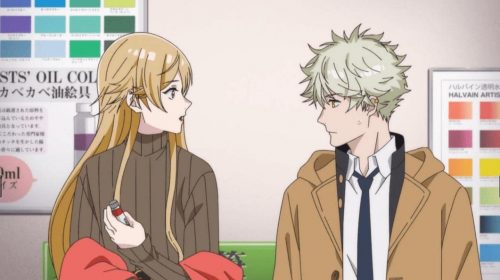
Even though Mori is significant in the beginning and only makes intermittent appearances after her graduation, her impact on Yatora is immense. Her paintings feature motifs like angels and religious symbolism, because, for her, the thing she wants to communicate is that her paintings are all prayers. It is a Mori painting that inspires Yatora’s artistic journey in the first place, but it is also her encouragement that keeps Yatora going, keeps him inspired. Like a guardian angel of sorts, Mori is like Yatora’s art goddess whom he reveres more than everyone else. Takahashi Yotasuke is one of Yatora’s classmates at art cram school, at least for a short while before he drops it. He is unapproachable, unsociable, maybe even mean at times, but Yatora is somehow always trying to extend the hand of friendship towards him. Yotasuke actually dislikes Yatora because he perceives him the way the stereotypical nerds used to look at “normies”, or “riajuu” since we’re in the context of anime. So Yotasuke thinks Yatora is a cool kid and honour student looking to add another notch to his long list of “places to belong”. He feels that Yatora has no business wanting the same thing as he does, as he is not of “this world” and already has everything. This is of course coming from Yotasuke’s own difficulty being sociable or excelling at anything else. Despite all these things, Yotasuke doesn’t seem to completely hate him, and Yatora is significant to him because he’s the first non-family contact he ever saved to his cellphone.
Final Thoughts
We’ll look back on Blue Period as one of 2021’s standout anime titles. Even though it was short, and it experienced some difficulties with weekly release on Netflix, the series was a beautiful ride from week to week and the kind of slice of life anime that makes the genre so compelling. The only qualms we have with this are its haphazard pacing, which was often lost in a blur of huge time skips. Perhaps 24 episodes would have been a better fit for this show. This love letter to art was passionate and emotional, and it deserves the kind of following it got. What did you think about Blue Period? Drop a comment below and tell us your thoughts!
[recommendedPost post_id='345797' url='' title='' img='' class='' widget_title=''] [recommendedPost post_id='346382' url='' title='' img='' class='' widget_title=''] [recommendedPost post_id='345404' url='' title='' img='' class='' widget_title=''] [recommendedPost post_id='316680' url='' title='' img='' class='' widget_title='']

No comments